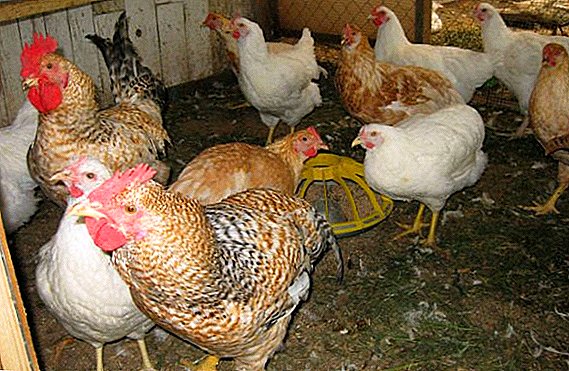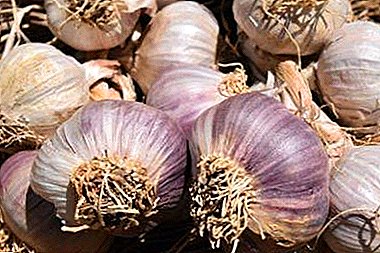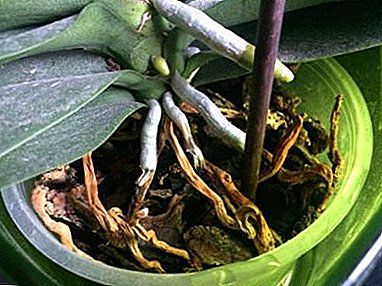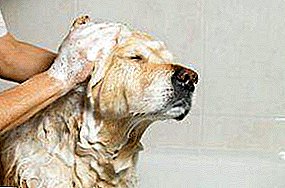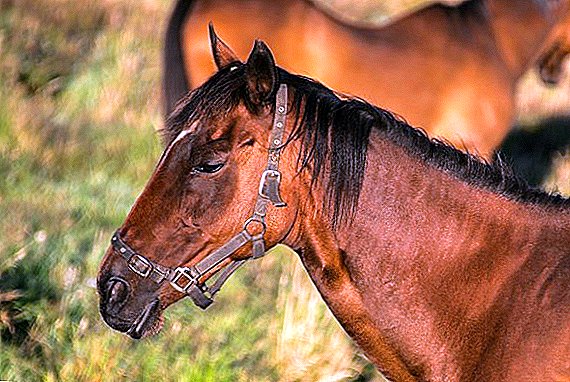 Infectious diseases, unfortunately, often affect horses. Alas, many of them are not treatable, so every horse manufacturer should be able to identify the disease. In this article, we will talk about such diseases as glanders, as well as describe how to recognize, diagnose and prevent them.
Infectious diseases, unfortunately, often affect horses. Alas, many of them are not treatable, so every horse manufacturer should be able to identify the disease. In this article, we will talk about such diseases as glanders, as well as describe how to recognize, diagnose and prevent them.
What is this disease
Sap is an infectious disease. It is acute and is accompanied by the formation on the skin and mucous membranes of ulcers, pustules, as well as multiple abscesses in the internal organs.
Find out how a horse can get sick.
Pathogen, sources of infection
The causative agent of the disease is Gram-negative bacilli Burkholderia mallei of the family Burkholderiaceae. In the external environment, this bacterium is unstable, it grows on ordinary nutrient platforms. In soil and water, their viability retains up to 60 days, and in feces of sick animals - 14-20 days.
Burkholderia mallei quickly dies under the influence of high temperatures and ultraviolet radiation. Also, the wand is quite sensitive to disinfectants.  The spread of glanders in the world, the state of 2017. It is possible to infect with glanders from some domestic animals (mules, donkeys, camels, less often goats, dogs, cats). Most often animals are infected in South and Central America, Asia, and Africa.
The spread of glanders in the world, the state of 2017. It is possible to infect with glanders from some domestic animals (mules, donkeys, camels, less often goats, dogs, cats). Most often animals are infected in South and Central America, Asia, and Africa.
Important! People get sick with glanders quite rarely.Infection occurs when the pathogen enters the damaged skin, mucous membranes of the respiratory or digestive tract. Getting into the bloodstream, the virus causes the appearance of granulomas in the organs, in which purulent inflammations occur and a septic-pyaemic process occurs.
Symptoms and course of the disease
The very process of the disease at the initial stage proceeds without obvious symptoms, being localized mostly on the internal organs. Visible signs appear 4 weeks after infection, so the presence of infection is determined by an allergic reaction to Mallein, which occurs 14-20 days after infection. 
Depending on the location of the infection, these forms are distinguished:
- pulmonary;
- nasal;
- skin
Learn about the diseases of the eyes and limbs of horses.Sapa has 3 forms:
- acute form. The incubation period of the disease is 1-5 days. The disease begins abruptly with a rise in temperature to + 41-42 ° С, the appearance of head and joint pain, fever, and muscle trembling. Conjunctiva and visible mucous membranes are hyperemic, the pulse is weakened (60-80 beats per minute), breathing becomes frequent and intermittent. The animal becomes apathetic, loses appetite.
 Red spots appear on the mucous membrane of the horse's nose, and after 2-3 days, yellow nodules are visible in their place, which break up, resulting in round or oval-shaped ulcers. A mucopurulent liquid with bloody impurities is released from these wounds.
Red spots appear on the mucous membrane of the horse's nose, and after 2-3 days, yellow nodules are visible in their place, which break up, resulting in round or oval-shaped ulcers. A mucopurulent liquid with bloody impurities is released from these wounds.Important! Changes in the nasal area occur after the defeat of the lungs.
Increasing ulcers can merge, resulting in the formation of extensive ulcerated surfaces. If the focus grows, the nasal septum and the concha are disintegrated.
At the same time pus flows profusely from the nostrils, and breathing becomes sniffling. If the disease is delayed, it becomes chronic. The ulcers heal, and in their place, star-shaped scars appear.
In addition, when the nasal region is affected, the submandibular lymph nodes are sucked into the process. They swell up, become hot and sore. After that, the nodes are sealed and become fixed.  In the case of the skin variant, diseases of the lesion are most often formed in the neck, head, prepuce, and extremities. First, on the skin, painful edematous swelling occurs, which dissolve after 1-2 days, and in their place dense formations appear, which soon also disintegrate and turn into festering wounds.
In the case of the skin variant, diseases of the lesion are most often formed in the neck, head, prepuce, and extremities. First, on the skin, painful edematous swelling occurs, which dissolve after 1-2 days, and in their place dense formations appear, which soon also disintegrate and turn into festering wounds.
Learn how to treat horses sickness.
Lymph nodes at the same time swell and in their course looming clear thickening. These seals soften and self-opening.  The acute form lasts 8-30 days and ends either with death, or flows into the chronic form;
The acute form lasts 8-30 days and ends either with death, or flows into the chronic form;
- chronic form. It is most common in horses (almost 90% of cases) and can last from several months to several years. Often proceeds without a clear clinical picture. The main symptoms of the disease are: dry cough, pulmonary emphysema, weight loss.
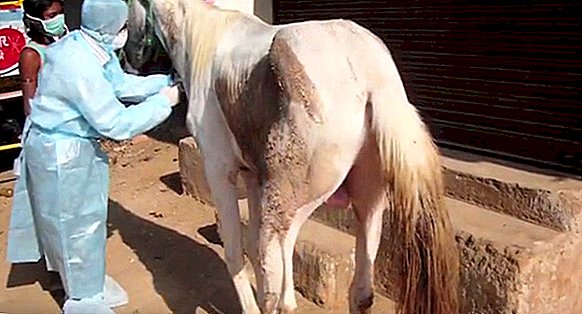 On the mucous membranes of the nose can be seen scars in the form of a star, which arose at the site of prolonged ulcers. At the same time increase and consolidation of submaxillary nodes can be observed. Sometimes, when the skin form of glanders on the pelvic limbs form a strong thickening (the so-called elephantiasis);
On the mucous membranes of the nose can be seen scars in the form of a star, which arose at the site of prolonged ulcers. At the same time increase and consolidation of submaxillary nodes can be observed. Sometimes, when the skin form of glanders on the pelvic limbs form a strong thickening (the so-called elephantiasis);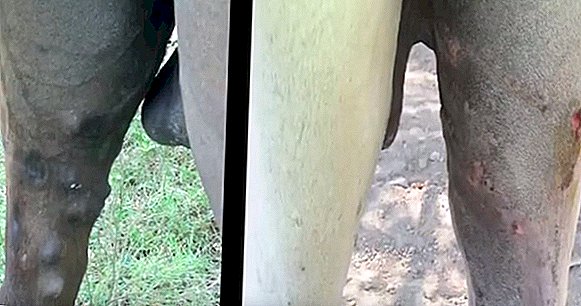
- latent form. Mainly observed in permanently deprived areas. It can occur without visible symptoms (mainly affects the internal organs) for many years.
Important! In the chronic form of the disease, relapses occur from time to time.
Diagnostics
It is possible to diagnose glanders with the help of certain laboratory tests, which are necessarily accompanied by instrumental procedures that make it possible to detect damage to internal organs.
Sap in horses is differentiated from myta, melioidosis, ulcers, rhinitis and epizootic lymphangitis.
The main methods used are:
- ocular malleinization. Allows you to identify the disease in 95% of cases. Mullein is administered twice with an interval of 5-6 days. The analysis is carried out in the morning and applied with a sterile pipette to the conjunctiva of a healthy eye. The reaction is observed after 3, 6, 9 and 24 hours. If purulent conjunctivitis develops, the reaction is considered positive. Some animals appear serous-purulent discharge from the nostrils. In rare cases, the reaction manifests itself in the second eye. If the answer is negative or in doubt, after 5-6 days, malleinization is repeated again in the same eye;

- subcutaneous malleinization. Efficiency - 95%. It is carried out in the case when the animal has eye disease. In this case, the temperature is preliminarily measured - it should not be above +38.5 ° C. Mullein is injected subcutaneously in the neck area. The next day, at 6 am, measure the temperature. Repeated readings are taken after 18, 24 and 36 hours. The result is made by changing the temperature and local reactions. The answer is considered positive if the temperature rises to +40 ° C and stays at this level for 6-8 hours. The presence of infection is also indicated by severe swelling at the injection site and the temperature is above +39.6 ° C. If swelling does not form at the injection site or it is insignificant and the temperature does not rise above +39 ° C, the reaction is considered negative;
- intradermal method. Used to study half wild horses. Mallein is injected into the neck and monitored for 48 hours. If a hot, painful swelling with clear contours has formed at the injection site, the reaction is considered positive. If there is no response to mallein, the injection is repeated after 48 hours and observed within 24 hours;

- analysis of blood serum in the reaction of complement fixation. Such a study is carried out only in horses that have a positive reaction to mallein. Such an analysis distinguishes individuals with an active sapnom process.
Did you know? At the beginning of the 20th century, glanders in Russia were very common. It was only in the Soviet Union that they took this disease actively. The result - the disease on the territory of the USSR was finally eliminated in 1940.
Diagnosis of sap: video
Pathological changes
Only in exceptional cases (for example, to clarify the diagnosis) is an autopsy allowed. At the same time, conditions that prevent the spread of the virus are strictly observed.
Pathological state depends on the form and process of the disease. The nasal and skin forms are identical to the symptoms that occur during life. When opening on the mucous membrane of the larynx and trachea find nodules.
Most often, such seals are covered with pulmonary and lymph nodes, in some cases - the liver, spleen and kidneys (there are granulomas similar to tuberculosis).
Did you know? For the first time, Sap was described by Aristotle as early as the 4th century BC. But for a long time this disease was not bred as a separate species, since it was considered a form of moth and lymphangitis.
In the case of the pulmonary form, nodular sap or sapovaya pneumonia may be present. Local lymph nodes are dilated, with a cut, necrotic foci with calcification prints are found in some. With the spread of glanders, such formations can be found in the liver, spleen and other organs.  Lungs affected by glanders
Lungs affected by glanders
Treatment
Unfortunately, at present there are no effective treatment methods. Sick horses must be destroyed.
Prevention and Elimination
In order to prevent an outbreak of the disease, at the state level, only healthy animals from a healthy territory can be brought into the country.
At the same time sanitary and veterinary rules are strictly observed. Imported horses must be sent for examination (including with the help of a mallein test) and quarantine.
Learn how to measure horse body temperature.
In addition, all adult horses in the spring and autumn are examined with serum. With negative results, animals are used without restrictions. If the test result was positive, such animals are considered suspicious.
In this case, they are isolated in a separate room (mainly in the one in which they were kept) and examined with the help of a maleic test. If the result of the test is negative, the horses are considered safe. With a positive result, the animals are subject to destruction and further pathological examination.  Sores on the skin of a horse If characteristic changes are found at autopsy, the diagnosis of glanders is considered to be established. Carcasses of such animals are cremated. And all the premises where animals were kept, the surrounding area, equipment, sleds, carts, shoes and clothing of the staff are disinfected (3% active chlorine, 20% mixture of lime, 4% caustic soda solution).
Sores on the skin of a horse If characteristic changes are found at autopsy, the diagnosis of glanders is considered to be established. Carcasses of such animals are cremated. And all the premises where animals were kept, the surrounding area, equipment, sleds, carts, shoes and clothing of the staff are disinfected (3% active chlorine, 20% mixture of lime, 4% caustic soda solution).
At the same time, the entire herd, the representative of which was infected, is isolated and examined.
Learn how to diagnose infectious anemia in a horse.
Treat the surrounding objects and furnishings in the following way:
- liquid wastewater - poured bleach (200 g per cubic dm) and mixed;
- premises - To begin with spray disinfecting solution, then carry out mechanical cleaning and disinfection. After that, whitewash is performed with a 20% solution of lime;
- manure, feed residues, bedding - after disinfection burn;
- the soil - disinfected with a hot solution of caustic soda (10%), formalin (4%) or bleach solution (5%);
- clothes, towels - boiled in soda solution (2%) hour;
- aprons, rubber gloves - soaked for an hour in a solution of chloramine (1-3%);
- harness, boots - wipe with a napkin moistened with chloramine solution (1-3%) twice with an interval of 15 minutes;
- open body areas - treated with a solution of chloramine (0.5-1%), alcohol (80%);
- transport - treated with chloramine (1-3%) at the rate of 300 cu. cm per square meter.
 In the absence of characteristic changes, bacteriological and histological studies are carried out.
In the absence of characteristic changes, bacteriological and histological studies are carried out.Since glanders is an incurable disease, it is important not only to inspect horses regularly, but also to protect them as much as possible from potentially unsafe sources. This is the only way to keep the herd at full strength.


 On the mucous membranes of the nose can be seen scars in the form of a star, which arose at the site of prolonged ulcers. At the same time increase and consolidation of submaxillary nodes can be observed. Sometimes, when the skin form of glanders on the pelvic limbs form a strong thickening (the so-called elephantiasis);
On the mucous membranes of the nose can be seen scars in the form of a star, which arose at the site of prolonged ulcers. At the same time increase and consolidation of submaxillary nodes can be observed. Sometimes, when the skin form of glanders on the pelvic limbs form a strong thickening (the so-called elephantiasis);



